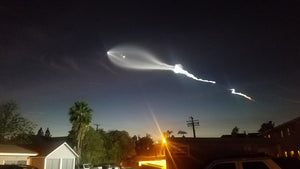November- Taurid Meteor Shower, Triangulum Galaxy and Owl Cluster
Taurid Meteor Shower
The Taurids, often known as 'Halloween fireballs' due to their late October appearance, are renowned for their spectacular, albeit infrequent, displays. Taurids are rich in fireballs, appearing big and brilliant but with low rates. These meteors, larger than most, endure longer in Earth's atmosphere, descending to 42 miles (66 km) before disintegrating. They glide at a leisurely 17 miles (27 km) per second, in stark contrast to the rapid Perseids, which dash across the sky at 37 miles (59 km) per second.
The Taurid meteor shower consists of two distinct streams: the Southern Taurids peaking from Nov. 4 to Nov. 5, and the Northern Taurids peaking from Nov. 11 to Nov. 12. These displays feature uncommonly slow and enduring meteors linked to comet Encke, a relatively small comet with a nucleus around 2.98 miles (4.8 km) wide. The 2023 Taurid meteor showers promise excellent viewing conditions, with just a 2% illuminated moon. Be sure to look up on the evening of November 11th when the shower will be at maximum!
Triangulum Galaxy
The Triangulum Galaxy, unlike its prominent neighbor Andromeda, can be a bit elusive to spot. Its light is spread across a relatively wide area, making it appear fainter than its listed magnitude suggests. In ideal conditions, it's theoretically visible to the naked eye, but binoculars are often necessary.
Look for it in the same field of view as Metallah (Alpha Trianguli) as a faint, oval patch of light, with more substantial binoculars revealing a bright core. Through small telescopes, the core appears oval, encircled by a faint halo. With larger telescopes and averted vision, you might glimpse spiral arms, some mottling, and even dark lanes within this celestial beauty.
NGC 457- Owl Cluster
The Owl Cluster, also known as the E.T. Cluster, is best observed with a telescope, although it's visible with binoculars as well. Using a telescope with a low magnification of around 30x, you can clearly distinguish Phi Cassiopeiae, which forms the owl's eyes. The other stars in the cluster beautifully outline its body and the wings extended outward, with the densest concentration of stars resembling the owl's chest. This mesmerizing cluster is a treat for stargazers!







